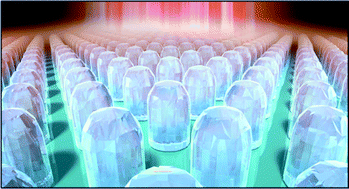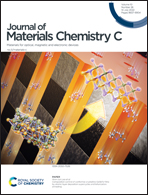Photoluminescence coupled to electric and magnetic surface lattice resonance in periodic arrays of zirconia nanoparticles†
Abstract
Surface lattice resonance (SLR) is a collective resonance induced by radiative coupling between localized resonances in periodically arranged nanoparticles. Compared with metal nanoparticles, which have been conventionally utilized to realize SLRs, dielectric nanoparticles with a high refractive index and low absorption coefficient can achieve spectrally sharper resonances. Although titania (TiO2) is a transparent material with a high refractive index and is used as a representative scatterer in the visible region, TiO2 has absorption at energies higher than near-ultraviolet (UV). As an alternative to TiO2, in this study, we fabricated periodic nanoparticle arrays composed of zirconia (ZrO2), which is transparent in the near-UV region. ZrO2 nanoparticle arrays are fabricated via the thermal oxidation of ZrN nanoparticle arrays and support SLRs of both electric and magnetic natures. As a demonstration, we examined photoluminescence (PL) enhancement of the emitter layer on the nanoparticle array. Compared with the TiO2 nanoparticle arrays with identical design, the PL enhancement by the ZrO2 nanoparticle arrays is larger under excitation with near-UV light, whereas it is comparable under visible excitation. These results indicate that ZrO2 nanoparticle arrays are beneficial for applications involving light in the near-UV region.



 Please wait while we load your content...
Please wait while we load your content...